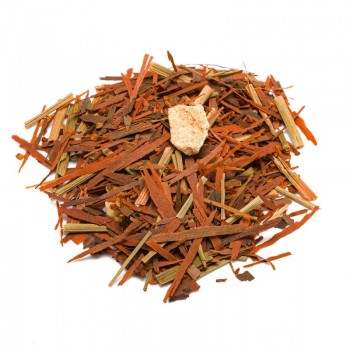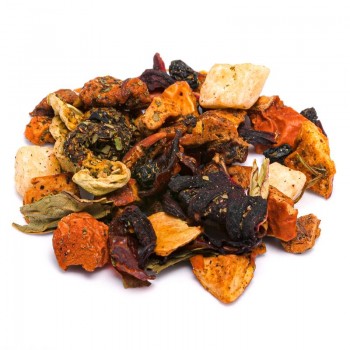Lemon and other purifying fruits create a tasty drink to sip in summer - excellent if consumed cold, to refresh and purify the body. The infusion enhances the virtues and flavor of lemon, so that it becomes a delicious habit that you can no longer do without. In terms of taste, the combination of lemon with cubes of apple and red currant creates a blend of flavors with sweet but slightly sour notes; which evoke the thirst-quenching flavor of a bitter lemonade.
Lemonade infusion: properties and benefits
The beneficial properties of lemon are known, given that it has been used for millennia both for nutrition and as a natural remedy for well-being. Lemon is a citrus fruit rich in micronutrients useful to the body, which are made available through this delicious drink.
The first action that a lemonade infusion performs is hydration of the body by providing elements capable of counteracting the loss of vitamins and minerals through sweat. As a thirst quencher, the lemonade infusion takes advantage of its antioxidants (polyphenolic compounds), to reduce irritation, reduce tiredness and improve energy levels through mineral salts. The highly appreciated virtues of lemon are the high content of vitamin C, which keeps the body's defense functions optimal, and the supply of essential minerals such as calcium and magnesium, which guarantee a balance in the metabolism.</p >
Among other valuable micronutrients, lemon contains potassium which regulates the body's electrolyte balance.
Another important wellness action of the lemonade infusion is that of purification from toxins. Its detox properties are enhanced by the presence of pineapple, for a decisive action in the elimination of metabolic waste, through diuresis and cleansing of the digestive system. The citric acid contained in lemons helps purify the liver, and consuming the infusion on an empty stomach in the morning releases accumulated waste and toxins, detoxifying the body. The diuretic action of pineapple, in combination with lemon, promotes the detox effect.
It also promotes the beauty of the skin as lemon is rich in astringent properties and vitamin C, which promote the well-being of the skin. The currants and pineapple contained in the infusion are also a good source of vitamins and flavonoids
Origins and history of cultivation
The main component of the infusion is lemon, originally from southern Asia, but now widespread and used throughout the world. It was introduced from the East already in the Middle Ages (11th-12th century) in Spain and North Africa, and then further spread to Europe by the Crusaders, who brought it from Palestine. If it was initially considered a variety of cedar, today we know that it is a separate hybrid species. The lemon tree is grown in most tropical and subtropical countries of the world, in relatively cool and balanced climate zones. In particular, they grow best in coastal Italy and California.
Fun fact: all types of lemons are known for their acidic, tart flavors, but some varieties are sweeter than others. Only a few varieties are classified as true lemons, while others are actually hybrids between lemons and other types of citrus fruits. Among real lemons, the most popular are Lisbon lemons and Eureka lemons, while other varieties grow in India, or they are smaller hybrid lemons such as the Meyer variety.
The commercial value of lemon is very high, given that lemon juice is a rich source of vitamin C and a characteristic ingredient of many sweets and desserts. Lemonade is a popular drink in warm seasons, and lemon juice is added to tea. The peel contains the oil used for the production of essential oil – a highly sought after ingredient.
Plant and flowers
The lemon plant, Citrus ×limon, is a small tree or bush of the rue family (Rutaceae). The plant can reach heights of 3-6 meters if it is not pruned, displaying scented, green oval leaves. The flowers have a sweet smell, with white petals above and purple-red below. The famous lemon fruit is oval, and shows a rather thick yellow outer rind. Various oil glands are found on the peel. The inside shows the acidic pulp, with small seeds – sometimes lemons are seedless. The internal pulp is decidedly acidic, and the characteristic astringent flavor is used in cooking.
The main active ingredients of the drink are vitamins, including vitamin C and vitamin B, mineral salts such as potassium. Other components included in the infusion are antioxidants, flavonoids, citric acid and other compounds. How to use the ingredients in the infusion
The infusion is obtained by placing approximately 3-5 grams of the lemonade mixture with water at a temperature of 100 °C in a cup (250 ml). Leave to infuse for 10 to 12 minutes before drinking. Add honey or sugar, if desired.
Lemonade infusion: side effects and contraindications
To avoid unwanted side effects, it is necessary to respect the recommended doses and not exceed the consumption of the infusion for too long periods. Excessive intake can cause constipation, gastroesophageal reflux and stomach acidity. The acidity of lemons can also damage your teeth, always with excessive doses.











 No reward points for this product.
No reward points for this product.















